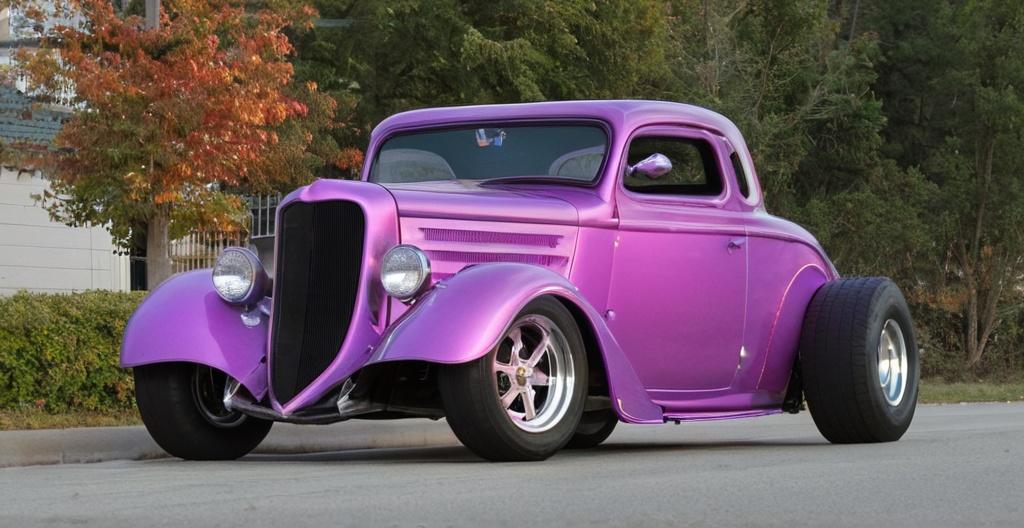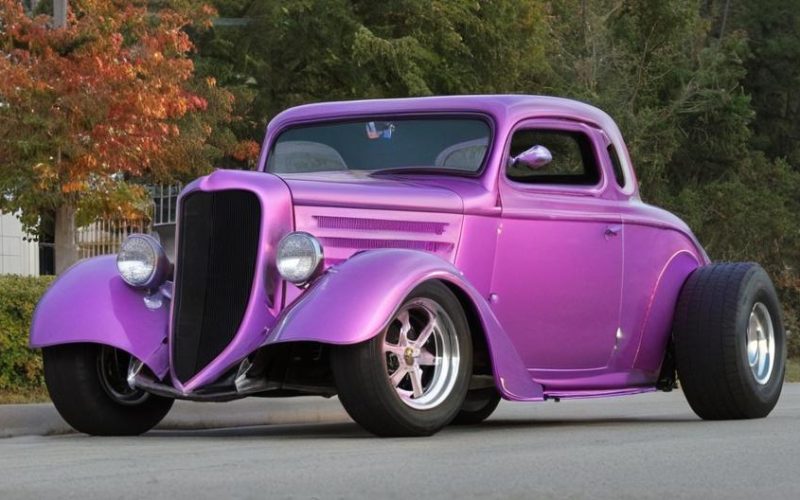Key Take Aways About The Birth of Street Rodding in America
- Street rodding emerged post-WWII, driven by returning soldiers and cheap, surplus vehicles.
- Ford and Chevy cars were popular due to their availability and affordability.
- The 1950s saw the rise of car clubs, events, and the NHRA, introducing organization and safety standards.
- Car shows and media coverage expanded street rodding’s appeal and mainstream recognition.
- Building hot rods is financially demanding but can yield high returns and economic impact.
- Modern street rodding incorporates new technologies and faces regulatory challenges.
- The community remains vibrant, supported by social media and a mix of old and new enthusiasts.

The Roots of Street Rodding
Street rodding, an automotive culture that blends mechanical innovation with personal expression, has been around since the years following World War II. It sprouted from a mix of returning soldiers seeking speed and adventure, alongside a surplus of inexpensive vehicles. The GI Bill provided the funds, and junkyards heaped with old Fords and Chevys provided the raw materials. Much like how folks back then wanted to spice up bland beans with some secret sauce, they wanted to transform these basic cars into something more thrilling.
The Early Days
In the beginning, street rodding wasn’t much more than a grassroots hobby. Picture this: young men gathered in garages, tinkering away under dimly lit light bulbs, swapping out stock engines for souped-up alternatives. The noise? Oh, it was glorious and loud enough to wake up the neighborhood. These early rodders had a singular goal: more speed. An attitude like, “Why settle for a gentle purr when you can have a roaring monster?”
Why Ford and Chevy?
You might wonder why Ford and Chevy cars became the darlings of early street rodders. The answer is simple: They were everywhere and cheap, much like the local diner that serves everything with extra grease. With a plethora of parts available, they turned into the perfect blank canvas for customization. The affordability made them disposable, so if a hot rod project went sideways, no big deal—just grab another from a yard.
Evolution of the Scene
Street rodding didn’t stay in garages for long. As the 1950s rolled through, the scene expanded. Events started popping up, from informal race meetings at old airports to more organized meets. This is where the car clubs rolled in, sort of like the cool kids of high school, bringing structure and a sense of community. They wore matching jackets, patched with club logos, as if to say, “Yeah, we’re a big deal.” These clubs started setting the tone for what the street rodding scene would become.
Street Rodding Gets Organized
As the movement grew, so did the need for organization. By the mid-20th century, clubs like the National Hot Rod Association (NHRA) entered the scene, introducing rules and safety standards. Yes, imagine street rodders talking about safety—not something right out of a sitcom. But rules were needed to keep the thrill seekers from turning every main street into a racetrack.
The Rise of Car Shows
Car shows became a venue for enthusiasts to flaunt their hard work. These events were all about setting your hot rod apart from the pack. A little like bringing your award-winning casserole to a church bake-off, but instead of secret family recipes, it was chrome bumpers and flame paint jobs. The shows celebrated everything from engine builds to interior customizations, and those who wowed the judges walked away with trophies and bragging rights.
Media Influence
Soon, magazines and television got into the act, shedding a light on this buzzing subculture. Publications like “Hot Rod Magazine” shared tips, stories and showcased the hottest builds. While public opinion varied—with some folks seeing rodders as rebels, and others as pioneers—the media attention brought street rodding into mainstream consciousness. It was like getting your band on the radio for the first time—a bit of fame with your name attached.
The Dollars and Cents of Rods
Street rodding isn’t just about revving engines and cruising through dusty roads. There’s a hefty financial side too. Building and maintaining these marvels requires significant investment. Parts, labor, and the inevitable trial-and-error can rack up costs faster than a speeding ticket.
Investment and Returns
While the initial costs might make your wallet groan, the returns can be substantial. A well-built hot rod can fetch high prices at auctions, particularly if it has garnered awards or media attention. Some enthusiasts treat hot rods as investments, buying low and selling high, similar to flipping houses but with more grease and exhaust fumes.
Economic Impact
Beyond individual projects, street rodding contributes to the economy through parts sales, restoration services, and events. Car shows and races attract tourists, benefitting local businesses. It’s a little known fact that while some people see a garage full of tools as a refuge, others see it as a revenue stream.
Street Rodding Today
Fast forward to the 21st century, and street rodding’s still here, albeit in a somewhat different guise. Modern rodders face challenges like stricter regulations and environmental concerns, but they adapt. They integrate new tech, tweaking everything from hybrid engines to advanced safety features. It’s like trying to cook an age-old recipe in a health-conscious world, trading butter for margarine but keeping that classic taste.
Community and Culture
Today’s street rodding community is vibrant, filled with a mix of old-timers and new blood. Social media plays a key role, offering platforms to share builds, exchange tips, and organize events. The camaraderie, the sharing of successes and failures, remains just as strong as those early garage meetings.
In the end, street rodding, much like a well-oiled engine, keeps chugging along. It’s a testament to the blend of innovation, culture, and a love for the open road. Whether you’re a seasoned veteran or a curious newbie, there’s something oddly satisfying about watching an old hunk of metal roar back to life. That’s street rodding—a quirky dance of nostalgia and modernity, wrapped in a shell of chrome and passion.
